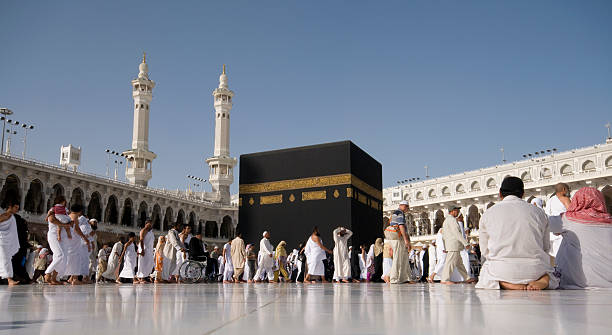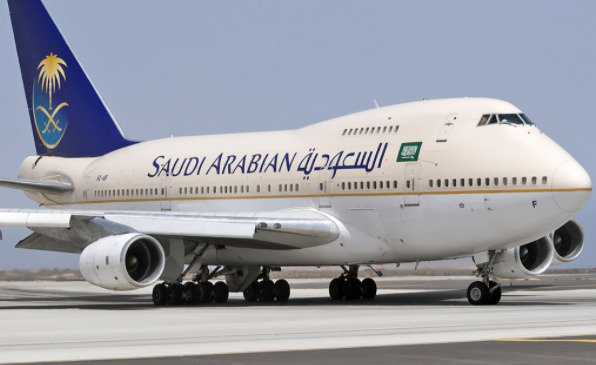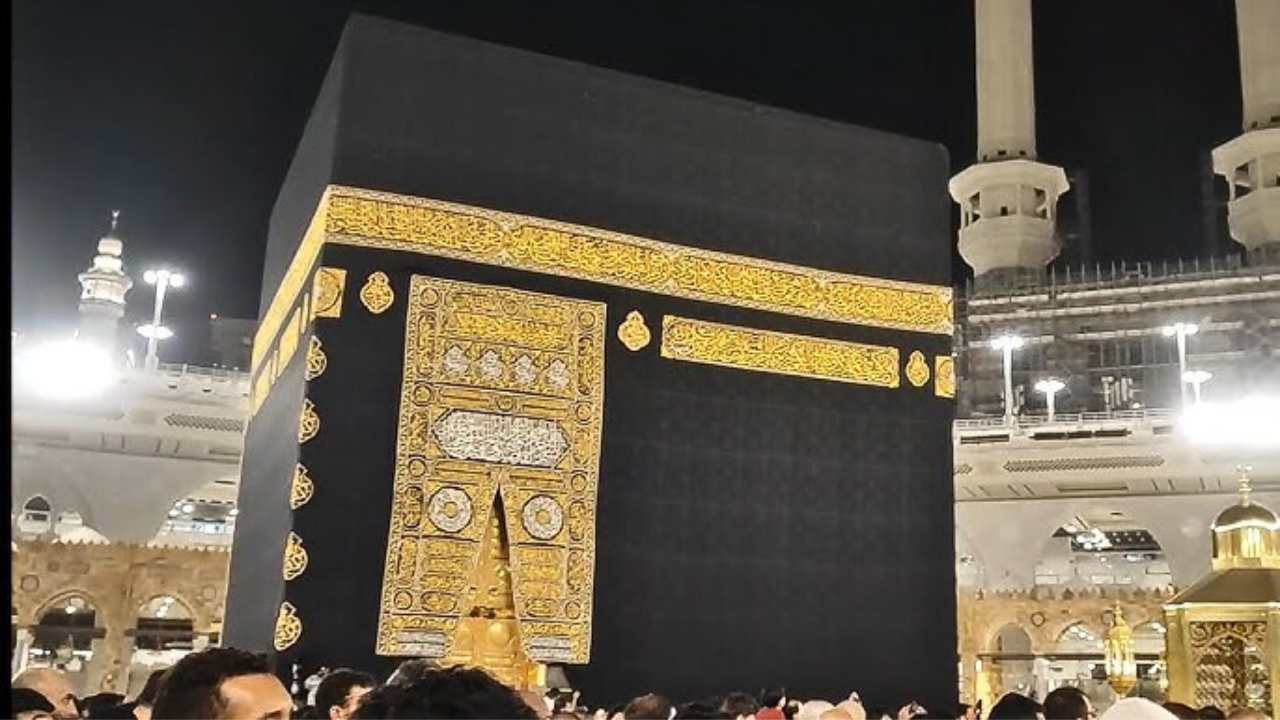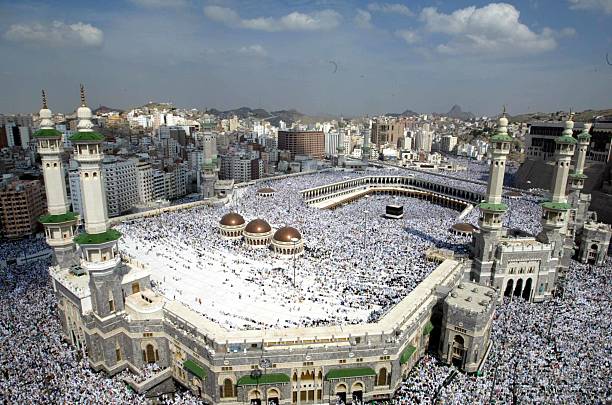History of Tawaf in Umrah and Hajj
Whether you are new follower or a Muslim by birth preparing for Hajj or Umrah, it is important to know about the concept and history of Tawaf. The hajj and Umrah pilgrimage symbolises the highest level of spiritual act and dedication for Muslims worldwide. The tawaf is the central focus of these important rituals, representing Unity, love, and everlasting devotion to Allah. Therefore, it is essential to enhance your knowledge of the various form of tawaf by exploring its historical context and significance in practice.
What is tawaf
The word tawaf comes from the Arabic action word 'taafa', which signifies ‘to encircle something' or 'to walk around something'. In the Islamic context, tawaf involves circling the holy Kaaba 7 times in an anti-clockwise direction as part of Umrah or Hajj, beginning at the black stone called hajr al-Aswad. One of the most important duties of Hajj and Umrah is essential for completing both pilgrimages. During tawaf, pilgrims follow the Sunnah of the prophets by reciting Takbir and other supplications.
History of tawaf
Tawaf, the act of walking around the Kaaba, is an important part of Islamic history, typically dating back to the era of prophet Ibrahim. As per Islamic tradition, Allah ordered Ibrahim to construct the holy Kaaba (house of god). Once he completed the task, Prophet Ibrahim was then told by Allah to gather the people and show them how to perform the hajj or tawaf as a way to show their devotion and obedience to Allah. Tawaf was carried out prior to Islam, but in a different manner. In the time before Islam, in the period of jahiliyyah, the pagans used to circle the Kaaba naked, claiming it was a tradition from their ancestors. They would remove their clothes and let them be trampled by people’s feet until torn, feeling the clothes had become tainted by sins they had committed, wanting to separate themselves from both clothes and sins. Men were required to perform during day, while women were permitted to perform at night. Having a thorough understanding of what tawaf is essential for a fulfilling pilgrimage experience. Later one, with the emergence of Islam, it was commanded to uphold cleanliness. During umrah, it is necessary to ensure that the intimate areas are concealed. Our prophet Muhammad (PBUH) instructed that no pagan or naked person be allowed to perform hajj or tawaf. Tawaf represents the coming together of believers in humility and unity on their spiritual path towards Allah. It acts as a symbol of prophet Ibrahim’s steadfast belief and dedication to Allah, motivating Muslims to emulate him.
Types of tawaf
There are seven different types of tawaf, each with its own specific occasion, rituals, obligations, and recommendations, showing that tawaf is not monolithic. Knowledge of these various forms of tawaf is essential for all pilgrims.
Tawaf Al-Qudum
Tawaf Al-Qudum is the first tawaf performed as a greeting by any Muslim choosing to perform either hajj Al-Qiraan or hajj al-Ifraad. Ihram attire is required for tawaf and men should also perform Raml and Idtiba. Those participating in hajj al-Ifraad and hajj al-Qiraan must complete this tawaf before the 9th day of dhul hijjah, when they will be at Arafat.
Tawaf al-Ziyarah
Also known as tawaf al-Ifadah, tawaf al-Ziyarah is done on the 10th of Dhul Hijjah by Hajj travelers before heading back to Mina for Rami al-Jamarat (stoning the devil). Once pilgrims have completed the act of Halq, they are no longer in the state of ihram and can perform this tawaf while wearing regular clothing. Nevertheless, it is still forbidden to engage in marital relations until tawaf al-Ziyarah is done. It must be done from the 10th to the 12th of dhul hijjah between the days of Tashreeq, starting at dawn. Not completing this tawaf results in an incomplete hajj. If it is done after the 12th of dhul hijjah, then one must sacrifice an animal as a penalty for being late.
Nafl tawaf
These are optional acts of circling the Kaaba that can be carried out spontaneously. Ihram is not necessary for this tawaf. Nevertheless, it is required to finish seven loops once it has begun. It serves as evidence of the person’s dedication and wish to be closer to Allah.
Tawaf al Wida
Referring to the farewell tawaf or tawaf of departing from the house of Allah. The final act of hajj journey is the ‘farewell tawaf,’ carried out right before departing from Makkah. It is mandatory (wajib) duty, symbolizing the pilgrim’s last act of devotion before leaving the sacred city. However, they are not required to make Makkah Mukarramah their permanent residence.
Tawaf al Umrah
A crucial part of umrah journey, the tawaf can be done at any point throughout the year. Performing this tawaf is a mandatory (farz act) for individuals arriving in Makkah with the intention of participating in hajj al-Tamattu or umrah. After completing umrah, Qarin will do tawaf al-Qudum separately.
Tawaf al-Nazar
Performing tawaf al-Nazar or tawaf for a vow entails honoring a commitment or pledge by circling the Kaaba. In Islam, it is seen as crucial to fulfill promises, and if an individual vows to complete tawaf, they should carry out the act with the intention of upholding their dedication to god. The person who makes a vow must fulfill it.
Tawaf al-Tahiyah
“Tawaf al Tahiyyah” denotes the salutation of tawaf. Just like tahiyya tul masjid, it is advised for individuals to perform before initiating the rituals of umrah or hajj upon entering masjid al haram. Tawaf al-Tahiyyah is the act of doing seven rounds around the Kaaba, moving in a counterclockwise way like in the regular tawaf, but it is intended as a way of greeting or showing respect to the Kaaba. It is advised but not required. However, if someone has already done another tawaf, that is sufficient. Tawaf is a required ritual during umrah and specific hajj pilgrimages. It essentially involves walking around the holy Kaaba in masjid al haram as a sign of respect for god. The significance of tawaf is evident as it establishes a connection with Allah, mirrors the movements of celestial bodies, plays a crucial role in hajj and umrah, and so on. Executing tawaf may not be difficult, but it is essential to be knowledgeable about prerequisites like ihram during specific kinds of tawaf, purity standards, and the rules to follow when carrying out the practice. Make sure to enhance your knowledge about various forms of tawaf by exploring its historical context.





